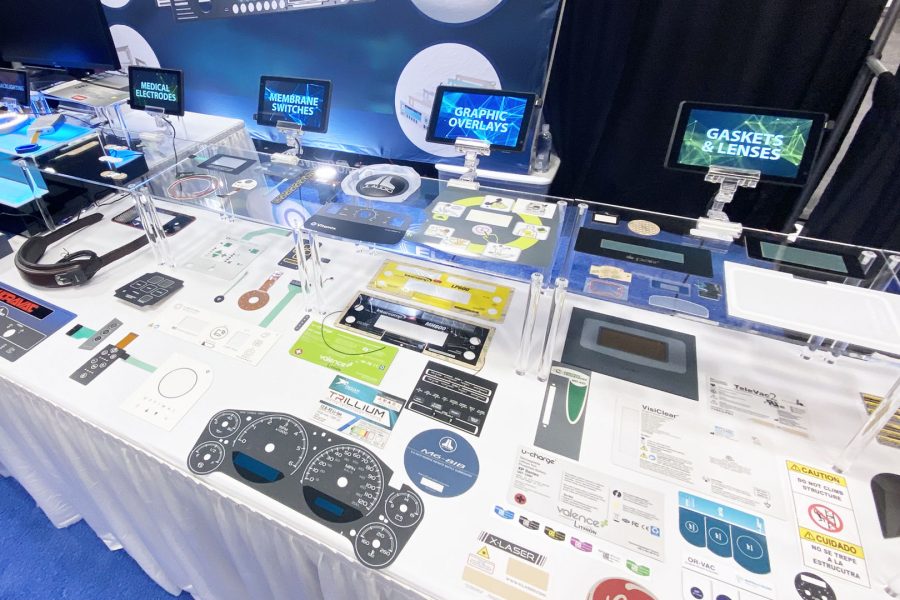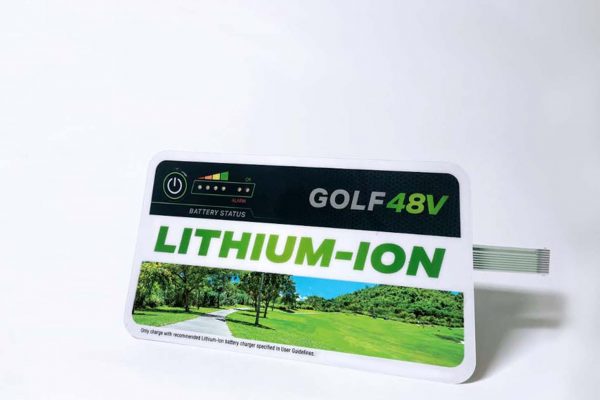Top 7 Common Materials

The top 7 common materials used by JN White. In this blog, we’ll explore the unique properties and applications of some of the most commonly used materials in our manufacturing processes, and explain why they are ideal for creating high-quality, durable products that meet the needs of a wide range of industries.
At JN White, we have over 50 years of experience working with a variety of materials, including polycarbonates, polyester, vinyl, and more. Each material has its own unique set of properties and benefits, and we carefully select the best material for each project based on its specific requirements.
Whether you need a custom overlay for a medical device, a graphic overlay solution for an industrial control panel, or a membrane switch for an automotive application, we have the expertise and experience to deliver a high-quality product that meets your exact specifications.
So, join us as we explore the top 7 common materials used by JN White, and discover how our innovative manufacturing processes and cutting-edge technology can help bring your vision to life.
- Polyester Label Stock
JN White utilizes .002″ polyester label stock. This is a type of label material that is commonly used in various industries due to its durability, versatility, and excellent printing capabilities. It is a thin, flexible material that is made from polyester film, coated with a pressure-sensitive adhesive on one side. We can get it with different adhesive release liners straight from the factory along with designed for ease of processing
This label stock is known for its excellent resistance to moisture, chemicals, and abrasion, making it ideal for use in harsh environments where labels are subjected to constant wear and tear. It is dimensionally stable which means resistant to tearing, shrinking, and stretching, ensuring that labels remain legible and intact over time.
These labels are commonly used in applications such as asset tracking, product identification, and labeling of electrical and electronic components. They are also used in harsh environments, such as outdoor applications, automotive, and industrial labeling. We also see this as the material of choice for medical device UDI labeling.
- Vinyl Label Stock
Vinyl label stock is a popular choice for creating high-quality, durable labels that are resistant to harsh environmental conditions. Vinyl labels are often used for outdoor applications, as they can withstand exposure to sunlight, moisture, and extreme temperatures. They are also resistant to abrasion, making them ideal for use in industrial settings. Vinyl label stock can be printed with high-resolution graphics and text, making it a popular choice for product labeling, branding, and identification. Additionally, vinyl labels can be customized with a variety of adhesives to ensure they adhere properly to different surfaces. Vinyl is extremely flexible and as a result is always the #1 choice for curved surface applications.
- Polyester Overlaminate
Polyester over laminate is a protective layer of material that is commonly used to enhance the durability and longevity of printed graphics, labels, and decals. This type of laminate is made from a thin layer of polyester film that is applied on top of the printed material, creating a clear and protective barrier that helps to prevent fading, scratching, and damage caused by moisture, chemicals, and UV rays.
Polyester over laminate provides excellent resistance to abrasion and impact, making it ideal for use in outdoor applications or in applications requiring heavy wear and tear. It is also highly transparent, which allows the printed material to be seen clearly without any distortion or discoloration. JN White most commonly used finishes include gloss, and matte.
- Polycarbonate /Lexan
Polycarbonate is a strong and durable thermoplastic material that is commonly used in a wide range of applications due to its excellent mechanical and thermal properties. One of the most well-known brands of polycarbonate is Lexan, which is a high-performance polycarbonate resin that is widely used in the manufacturing of various products.
Polycarbonate, including Lexan, is highly resistant to impact, making it a popular choice for safety equipment. It is also resistant to extreme temperatures, UV radiation, and chemicals, which makes it ideal for use in outdoor applications such as signs, light covers, and automotive components.
Lexan, in particular, is known for its excellent clarity and high optical quality, making it a popular choice for use in optical lenses and displays. It is also available in a variety of colors and finishes, such as velvet and glossy which can be chosen based on the desired appearance and functionality.
- Hard Coated Polycarbonate(s)
Hard coated polycarbonates are a type of polycarbonate plastic that have been treated, typically on one side, with a special coating to increase their durability and resistance to scratches, abrasions, and other forms of wear and tear. This coating typically consists of a thin layer of clear, hard material that is applied to the surface of the polycarbonate through a process known as vacuum deposition.
Hard coated polycarbonates are commonly used in a variety of industries, including automotive, aerospace, electronics, and construction, where they are valued for their high strength-to-weight ratio, clarity, and impact resistance. They are often used in applications where clarity and visibility are important, such as protective shields, lenses, and display windows.
- Polyester
Hard coated polyester is a type of polyester film that has been treated with a special coating to increase its durability and resistance to scratching, abrasions, and other forms of wear and tear.
Hard coated polyester films are widely used in a variety of industries, including automotive, electronics, and healthcare, where they are valued for their high strength, optical clarity, and resistance to chemical and UV exposure. They are often used in applications where visibility and durability are important, such as protective overlays for electronic displays, medical equipment, and automotive instrument panels. While clear, polyester is biaxially oriented, which means that it is not as clear as polycarbonate and can sometimes display bi-fraction of light or Newton rings in a clear window application.
One of the key benefits of hard coated polyester is its excellent abrasion resistance, which makes it ideal for use in high-traffic or high-use environments. The hard coating helps protect the underlying material from damage, extending the life of the product and reducing the need for frequent replacements. Due to its’ overall durability chemical resistance and dimensional stability, polyester is almost always the choice for membrane switch graphic overlays.
- Extreme Environment polyester XE
Extreme Environment Polyester XE (EE Polyester XE) is a type of polyester resin specifically designed to withstand harsh environmental conditions. This type of resin is highly durable and resistant to extreme temperatures, humidity, chemicals, and UV radiation, making it ideal for use in a wide range of applications.
EE Polyester XE is commonly used in the aerospace, marine, and automotive industries, where it is valued for its high strength, flexibility, and resistance to corrosion. It is often used to create parts and components that must withstand constant exposure to extreme conditions, such as aircraft engine parts, marine equipment, and vehicle bodies.
To download our entire Material Matrix visit: https://jnwhiteusa.com/top-7-common-materials/
More from Ken
NIST Special Publication (SP) 800-171 is the cybersecurity standard that the Department of Defense (DoD) relies on to protect Controlled Unclassified Information (CUI) in non-federal systems. It defines 110 security requirements across 14 control families, along with 320+ assessment objectives that organizations must meet…
When people hear the term graphic overlay, they often think of it as just a decorative cover. But in industrial and medical applications, polycarbonate overlays and other engineered materials are much more than a cosmetic detail. They are a critical…
The JN White Memorial Scholarship Committee is proud to announce that Tess McLaughlin has been selected as the 2025 recipient of the JN White Memorial Scholarship. Tess embodies the spirit of leadership, academic excellence, and community service that this scholarship…








